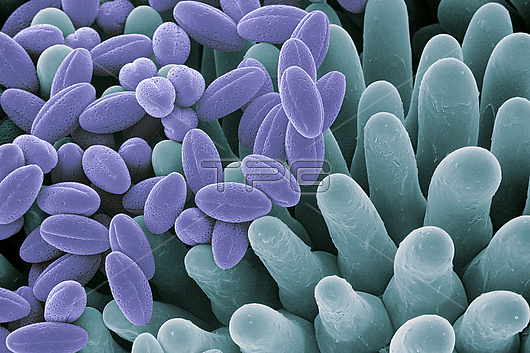
Scanning electron micrograph of pollen on the papillate stigma of Brassica campestris, field mustard. The picture shows (left side) individual pollen grains (blue) and the hairs of the stigmatic surface (green). On contact with a compatible stigma, the pollen grains obtain water from the stigma and germinate to produce a tube. This penetrates the stigmatic surface and conveys the male gametes down the style to the ovary, resulting in fertilisation. In this picture, the pollen grains have not germinated. This illustrates self-incompatibility, a common feature of the Brassica family. The pollen here is from the same flower as the stigma. It has failed to germinate because the stigma disallowed its access to water. This effect ensures that cross-pollination is favoured over self-pollination, which in nature preserves the genetic diversity of plant populations. Mag x 400 at 10x8
| px | px | dpi | = | cm | x | cm | = | MB |
Details
Creative#:
TOP26387011
Source:
達志影像
Authorization Type:
RM
Release Information:
須由TPG 完整授權
Model Release:
N/A
Property Release:
N/A
Right to Privacy:
No
Same folder images:

 Loading
Loading